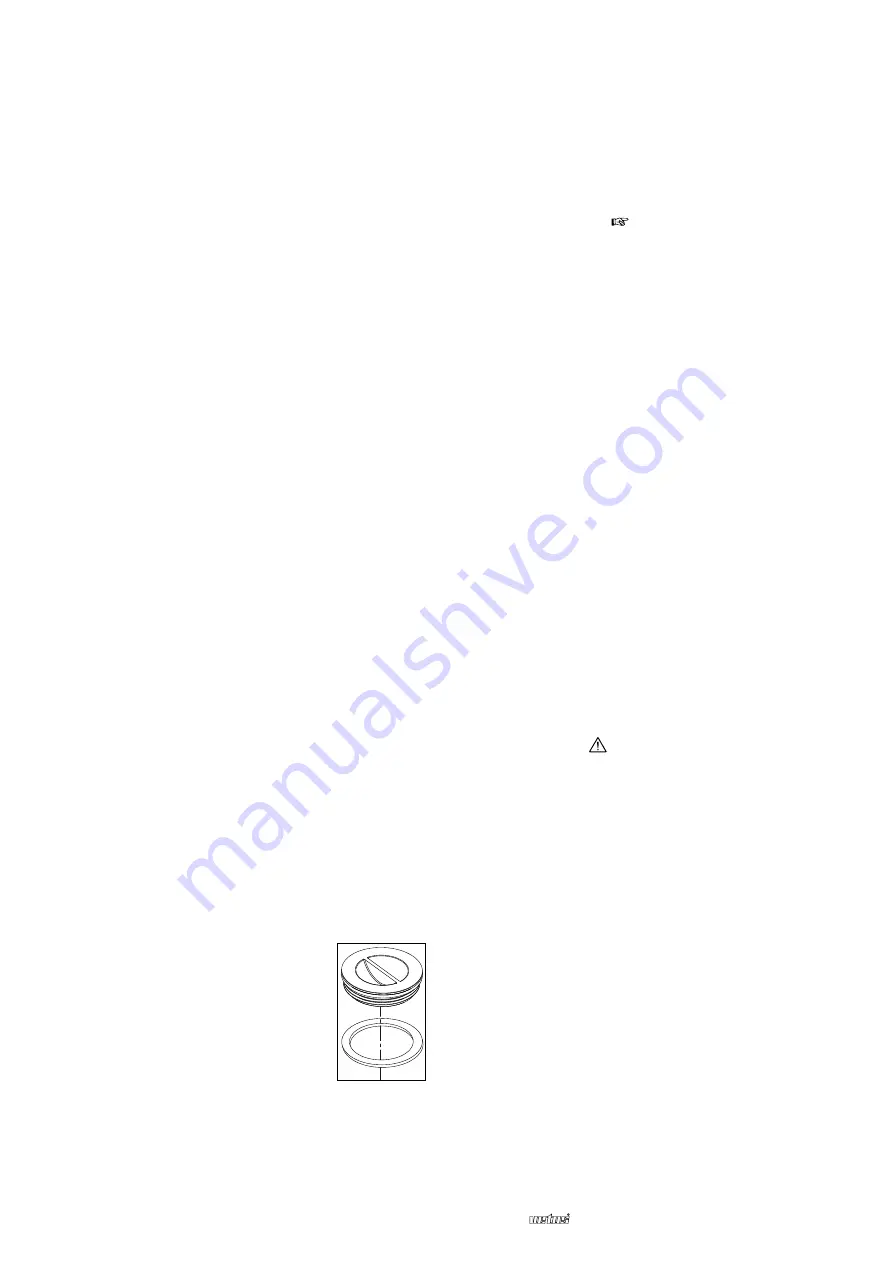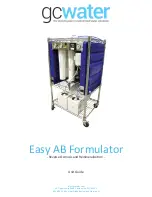
6
050407.01
DWSC Drinking water tank systems 120 litres
1 Introduction
This manual applies to the Vetus (permanent) plastic drinking water
tanks with built-in electric pump.
See the drawings on Page 30 for dimensions. Tolerances of + or - 2%
apply to all dimensions!
These tanks are made from polyethylene (MDPE).
Low pressure polyethylene is one of the most environmentally
friendly plastics; the characteristic properties are:
- Algae resistant
- Hardly any condensation
- Insulating material
- Very smooth surface
- Indestructible plastic
- Has no electrolysis problems unlike stainless steel
In a pressurized water system the pump will be switched on immedi-
ately after the pressure has dropped when water is tapped ensuring
a continuous flow of tap water.
2 Use
2.1 Starting the pressurized water system
Clean and disinfect the tank and the pipes before taking the drinking
water provision into use for the first time.
Disinfect the tank at least once a year preferably at the beginning of
the sailing season.
When starting the pressurized water system, ensure that there is suf-
ficient water in the tank.
• Open all taps; both hot and cold water.
• Switch the pump main switch on.
• Close the taps as soon as the water is free of air.
• Check connections for leaks.
Check the working of the pump by slowly opening and closing a tap.
2.2 Cleaning
Clean the inside of the tank with water and soda. Rinse the tank with
clean tap water.
The inspection cover can be removed in order to clean the inside of
the tank. Always grease both sides of the pack-
ing with Vaseline before putting the cover back in
place.
If it is necessary to replace the cover: Art. code:
WW03 (Inspection cover with packing)
2.3 Disinfecting
When using for the first time:
Disinfect the tank by filling it with a solution of bleach in water (1 :
1000). Circulate this disinfecting mixture through the drinking water
system. Remove the solution and rinse the tank with clean drinking
water.
T
ip
Calculation of the amount of common household bleach needed to
disinfect the tank:
Use 1 millilitre of bleach for each litre tank capacity. Or use 0.13 ounc-
es (oz) of bleach for each US gallon of tank capacity.
At the beginning of the sailing season:
Disinfect the tank and prevent the growth of algae at the same time
by filling the tank with a solution of clear vinegar in water
(1 : 20). Leave the vinegar solution in the tank for at least 24 hours,
the longer the better. Remove the vinegar solution and rinse the tank
several times with clean tap water.
2.4 Filling
Fill the tank with clean tap water. Always run water through the pipes
from the tap on shore or the jetty before filling the tank.
If the tank has been dry for a long time or if the water has an unpleas-
ant taste the cleaning and disinfecting procedure described above
must be repeated before filling the tank.
Never top up a partly filled tank but always pump the tank empty
first before refilling it. Water that has been in the tank for a long time
could be contaminated!
The water level in the tank is visible through the tank wall!
i
mporTanT
Always fill a drinking water tank with fresh drinking water from a
drinking water main
. Never fill the tank with water from a fire extin-
guishing system.
2.5 Prevention of bacterial contamination and formation
of algae
Water contaminated with bacteria or algae has an unpleasant taste.
In order to prevent contamination by bacteria and the formation of
algae, chlorine tablets can be added to the drinking water (e.g. Cer-
tisil®,
not permitted in the Netherlands
) or as an alternative use 0.5
to 1 % clear vinegar or bleach.
Bacteria and algae develop much quicker at a higher ambient tem-
perature than at a low temperature.
Exposure of the tank to direct sunlight also speeds up the develop-
ment of bacteria and algae.
We advise
chemical cleaning
for
cleaning the whole drinking wa-
ter system
. Cleaning the system by means of a thermal or chlorine
method only gives a limited result for the removal of the biofilm
formed. Harmful micro-organisms such as the legionella bacteria are
not killed by this. Therefore, we advise use of the product BioRemove
for the periodic cleaning of the whole drinking water system.







































